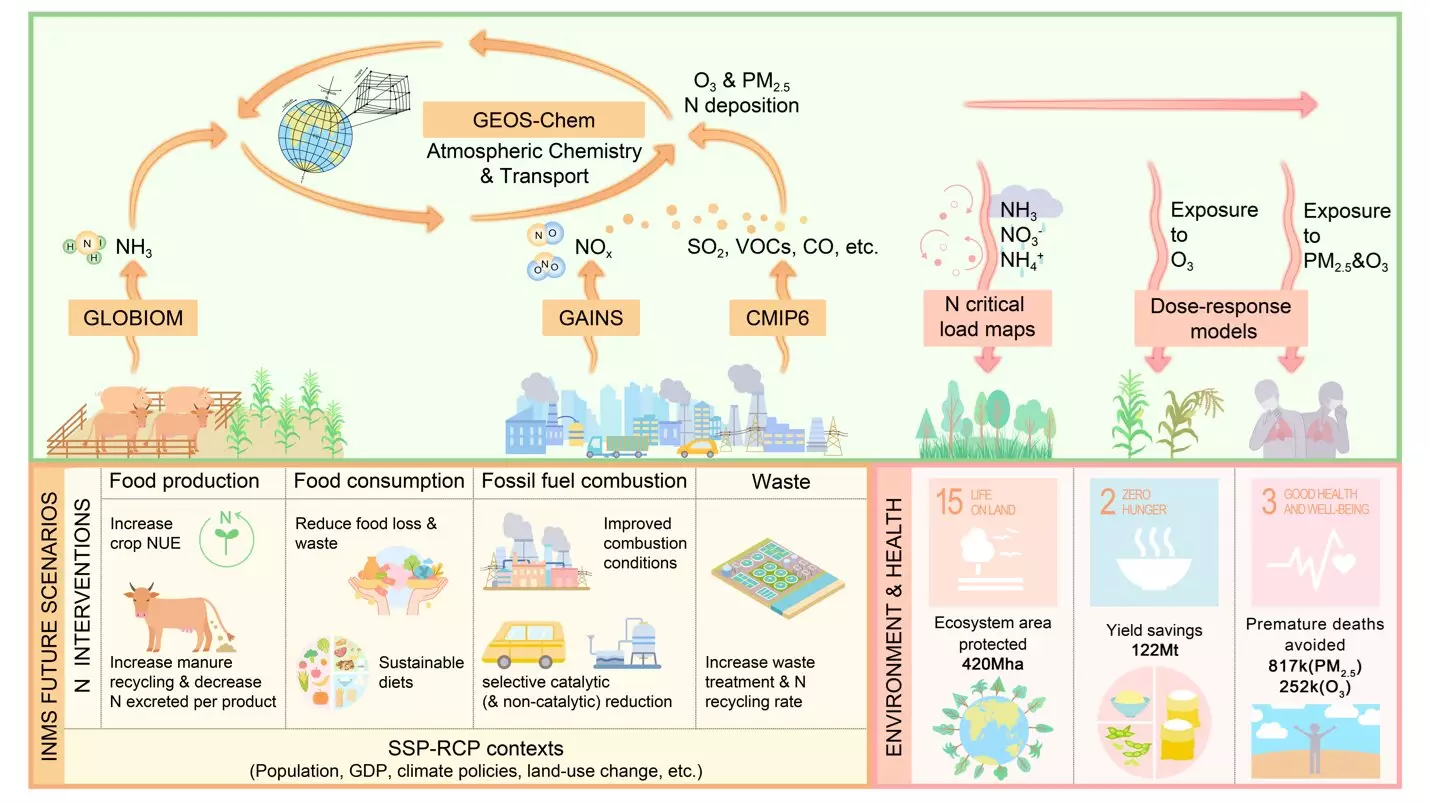The nitrogen cycle plays a crucial role in sustaining life on Earth by facilitating the transfer of nitrogen through various ecosystems. However, human activities have dramatically altered this cycle, pushing it beyond sustainable limits. The widespread use of synthetic fertilizers in agriculture and the burning of fossil fuels have introduced significant amounts of nitrogen pollutants into the environment, including ammonia (NH3), nitrogen oxides (NOx), and nitrous oxide (N2O). These compounds not only contribute to air pollution but also pose severe threats to human health, agricultural productivity, and ecological balance, thereby exacerbating existing environmental crises.
The growing global population, coupled with escalating demands for energy and food, has led to increased nitrogen pollution. It is anticipated that without significant interventions, the negative impacts associated with nitrogen emissions will intensify in the coming decades. Hence, there is a pressing need to explore effective strategies for mitigating nitrogen pollution and understanding its broader implications on health and ecosystems.
Bridging the Research Gap
Despite the acknowledgment of nitrogen pollution’s implications, there exists a notable disconnect in the research surrounding this issue. On one hand, traditional nitrogen budget studies have quantified the flows of nitrogen across different environmental compartments—air, water, and soil. However, these investigations often lack depth in understanding biogeochemical transformations in detail. On the other hand, Earth sciences typically model these transformations but focus predominantly on isolated environmental contexts, missing the interconnectedness of various nitrogen pathways.
To overcome this research gap, a multi-disciplinary team of scientists has taken significant steps to explore the potential of “nitrogen interventions”—strategies aimed at improving nitrogen management. Their innovative study, recently published in *Science Advances*, intertwines the evaluation of nitrogen-related policies with integrated assessment models and air quality analysis. This comprehensive assessment aims to illustrate how targeted interventions can effectively improve air quality and reduce nitrogen deposition across various geographical landscapes.
The research identifies an array of impactful measures, including optimizing fuel combustion, enhancing agricultural nitrogen use efficiency, minimizing food waste, and improving crop management practices. These interventions stand to substantially decrease the premature health impacts associated with air pollution, including a projection of preventing approximately 817,000 deaths linked to nitrogen-exacerbated air quality issues. Furthermore, significant reductions in ground-level ozone concentrations and minimized crop yield losses could be realized through these strategic actions.
Lead author Yixin Guo emphasizes that high-ambition nitrogen interventions could lead to a remarkable 40% reduction in global ammonia emissions and a 52% decrease in nitrogen oxides by 2050 in comparison to levels recorded in 2015. Such ambitious targets not only promise to enhance air quality but also present a vital opportunity to align with the global commitments laid out in the Sustainable Development Goals (SDGs).
The implications of implementing nitrogen management strategies are particularly pronounced in developing regions, specifically Asia and Africa, which are projected to experience the most favorable outcomes from such interventions. The study reveals that the anticipated benefits are expected to compound over time, with more significant reductions in nitrogen emissions and subsequent health benefits arising by 2050, as opposed to 2030. This suggests that early adopters of innovative crop practices and technological advances in industrial sectors will reap the most substantial rewards, thereby bolstering air quality and public health.
The study underscores the urgency of addressing nitrogen pollution whilst showcasing the interconnected benefits of sustainable practices. Beyond immediate advantages, implementing comprehensive nitrogen strategies aligns with multiple SDGs, including those targeting health (SDG3), hunger alleviation (SDG2), responsible production (SDG12), and sustainable ecosystems (SDG15).
Customized Solutions for a Global Challenge
The collaborative findings from this research initiative amplify the understanding that tailored approaches to nitrogen management are essential. The diversity in regional contexts underscores the necessity of customizing policy recommendations to address complex environmental issues like nitrogen pollution effectively. As noted by co-author Wilfried Winiwarter, adapting these solutions to regional specifics increases the potential for success and mitigates overarching environmental impacts.
Drawing attention to the multifaceted nature of nitrogen pollution not only highlights the intricate connections between environmental health and human well-being but also reinforces the imperative of collaborative, science-driven approaches to tackle global sustainability challenges.

